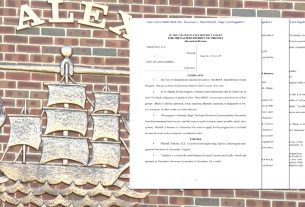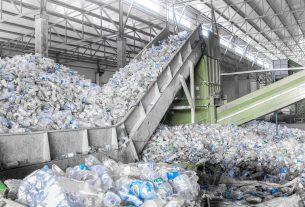Bankruptcies, proposals to renegotiate loan terms expected to rise in first quarter
Reviews and recommendations are unbiased and products are independently selected. Postmedia may earn an affiliate commission from purchases made through links on this page.
Article content
Signs are mounting that households and businesses are struggling to manage the rising cost of debt with bankruptcies and proposals to renegotiate terms of loans expected to rise, at least in the first quarter of the year, despite the mitigating effects of a strong labour market and “unprecedented” levels of consumer savings.
Advertisement 2
Article content
The forecasts come after Canadian business insolvency filings grew 37.2 per cent in 2022, representing the largest year-over-year percentage increase in more than 30 years, according to a report from the Canadian Association of Insolvency and Restructuring Professionals (CAIRP) released on Feb. 7. CAIRP also said that consumer insolvencies rose 11.2 per cent in 2022 and were up 16.3 per cent in the fourth quarter of last year compared with the same time in 2021.
Article content
“Inflation has pushed up the cost of everything from raw materials to fuel, putting significant financial strain on businesses. At the same time, consumers are grappling with the cost of living and reducing their spending,” said Jean-Daniel Breton, chair of CAIRP. “As business owners struggle to manage these impacts in addition to debt carrying costs becoming increasingly expensive, we anticipate the number of businesses seeking restructuring or debt relief options will continue to grow in 2023.”
Advertisement 3
Article content
Approximately 3,400 Canadian businesses filed for insolvency in 2022, said CAIRP, citing the latest statistics from the Office of the Superintendent of Bankruptcy, an increase from 2,480 insolvencies in 2021. The majority of insolvencies were bankruptcies (77 per cent) and the remainder were proposals to renegotiate the terms of loans (23 per cent).
The data from the Office of the Superintendent of Bankruptcy also points to a stressed consumer, wrote Charles St-Arnaud, chief economist at Calgary-based Alberta Central, which is the central banking facility and trade association for Alberta’s credit unions, in an analysis published on Feb. 8.
While insolvencies — which include bankruptcies and proposals to renegotiate the terms of loans — have been declining since the summer, they were still up 13.8 per cent in December from the same time in 2021.
Advertisement 4
Article content
The increase was due to a 23.9 per cent year-over-year increase in proposals, which more than offset a nine per cent decline in bankruptcies. Across Canada, insolvencies were up in almost every province: Newfoundland, 48.5 per cent year over year; Nova Scotia, 39.9 per cent; P.E.I., 29 per cent; Manitoba, 26 per cent; Quebec, one per cent; New Brunswick, six per cent; Saskatchewan, 12.7 per cent; and Alberta, 14 per cent.
“As a result, they (proposals) are now above their pre-pandemic level in all Western provinces: B.C., Alberta, Saskatchewan, and Manitoba. This situation suggests a rise in households struggling with their debt load,” said St-Arnaud.
Households have certainly had the screws put to their finances.
Advertisement 5
Article content
Borrowing costs have risen precipitously as the Bank of Canada rapidly increased interest rates to 4.5 per cent from 0.25 per cent beginning in March 2022 in an effort to tackle inflation, which has been running well above the bank’s target of two per cent. That has led to “record levels of household debt,” according to St-Arnaud.
Like Breton at CAIRP, St-Arnaud is predicting that insolvency rates will continue to rise this year, forecasting they will “pick up sharply in January, February and March” on an unadjusted basis.
There are mitigating circumstances, though, that could ease the pressure on households, including a strong jobs market and a robust savings rate.
The jobs market proved its mettle in January, with Statistics Canada reporting on Feb. 10 a net gain of 150,000 positions, ten times the consensus forecast. James Orlando of TD Economics called it a “blowout” report. However, RBC economist Carrie Freestone indicated she does not think the current pace of gains is sustainable.
Advertisement 6
Article content
-

‘Double whammy’ has Canadians more concerned about debt than ever, survey finds
-

Questions to ask yourself when allocating money to debt repayments, savings and investments
-

Top 6 ways to improve your finances this year
“It remains our view that labour markets will not remain this tight over the near term. The delayed impact of the Bank of Canada’s 425 basis points of hikes are still gradually flowing through to household and business debt payments and will ultimately erode demand, pushing unemployment higher through the end of the year,” Freestone wrote.
Economists estimate it can take anywhere from four to six months for interest rate increases to fully filter through the economy.
That leaves savings to come to the rescue.
RBC, in another recent analysis, pegged Canadians’ savings hoard at $320 billion up from the $300 billion since the spring of 2020.
Dave McKay, RBC chief executive, described the savings pile as “unprecedented” in an interview with BNN Bloomberg and said the bank reckons those savings will help Canadians weather the economic storm that has been widely predicted for 2023.
• Email: gmvsuhanic@postmedia.com | Twitter: gsuhanic





